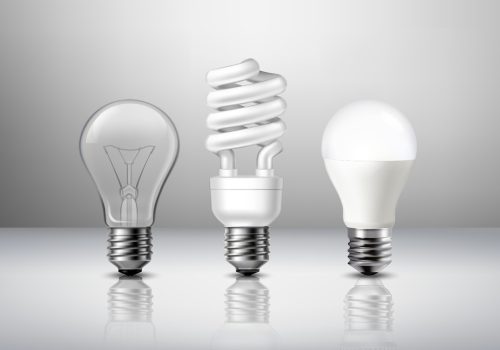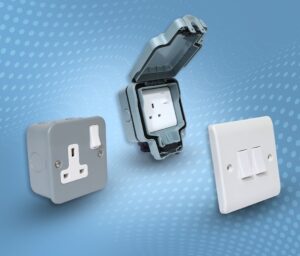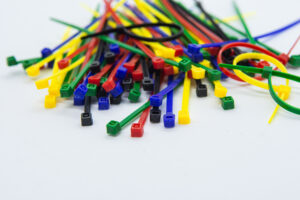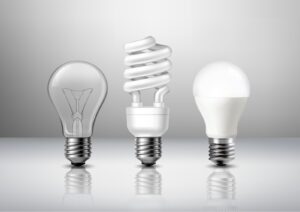The Benefits of LED Technology Over Fluorescent Lighting
Fluorescent lighting has long been the standard for energy-efficient lighting, but it comes with certain drawbacks. Although more energy-efficient than incandescent bulbs, fluorescent lamps still consume more power than their LED counterparts, and they contain toxic mercury, posing environmental risks when not disposed of properly.
LED (Light Emitting Diode) technology is the game-changer. LEDs have rapidly replaced fluorescent lamps due to their numerous advantages. Here’s why:
Energy Efficiency: LEDs consume significantly less power than fluorescent lamps. On average, they use up to 80% less energy, which not only helps in reducing your electricity bills but also lessens the overall environmental impact. LED lights convert most of the energy they use into light, making them far more efficient than fluorescent bulbs, which lose a significant amount of energy as heat.
Longer Lifespan: LEDs have an impressive lifespan—up to 25,000 hours or more. This is about 2 to 3 times longer than fluorescent lamps. This translates to fewer replacements and less waste over time.
Environmental Impact: LEDs are free from toxic materials like mercury, unlike fluorescent lamps. They also produce less carbon dioxide during their use due to their efficiency. This makes LEDs a greener, more sustainable choice for both homes and businesses.
How LEDs Save Money in the Long Run
While the initial cost of an LED bulb can be higher than that of a fluorescent lamp, the long-term savings far outweigh the upfront expense. Here’s how:
- Lower Energy Bills: Because LEDs are far more energy-efficient, your electricity consumption will drop dramatically. A single LED bulb can save you up to $80 over its lifespan compared to traditional incandescent bulbs, and it can save you even more compared to fluorescent lighting.
- Reduced Maintenance Costs: LEDs last much longer than fluorescent bulbs. Their durability means you’ll spend less money on replacements and maintenance. In high-use areas like commercial buildings, the savings can be substantial.
- Tax Incentives and Rebates: Many governments and utility companies offer rebates and tax incentives for switching to energy-efficient lighting. This further reduces the cost of transitioning to LED lighting, making it a financially savvy choice.
Improved Light Quality and Versatility
LEDs offer superior light quality compared to fluorescent lamps. Here’s how:
- Instant Full Brightness: Unlike fluorescent lights, which can take time to reach full brightness, LEDs light up instantly, providing immediate illumination without the wait.
- Customizable Color Temperature: LEDs offer a range of color temperatures from warm white to cool daylight, allowing you to tailor the lighting to the specific needs of your space. Fluorescent lights typically only offer a narrow range of color options, often resulting in cold, harsh lighting.
- Dimmable and Smart Features: Many modern LED lamps are dimmable and can be integrated with smart home systems. This means you can control the brightness and color temperature of your lights with a smartphone or even voice commands. Fluorescent lamps, by contrast, offer little to no flexibility in this regard.
Smarter, More Sustainable Lighting Solutions
The shift from fluorescent to LED is not just about energy savings; it’s about smarter, more sustainable lighting solutions for the future. Here’s how:
- Smart Lighting Integration: LEDs can be easily integrated into smart lighting systems, allowing homeowners and businesses to control their lighting remotely, adjust settings based on occupancy, or even automate lighting schedules. This integration is impossible with older fluorescent technologies.
- Better for the Environment: Because of their energy efficiency and long lifespan, LEDs contribute to reducing greenhouse gas emissions. As governments and businesses prioritize sustainability, LEDs have emerged as the most viable lighting option for achieving environmental goals.
- Lighting for Well-being: LEDs are now being used in human-centric lighting systems that are designed to mimic natural daylight patterns. These systems have been shown to improve mood, productivity, and even sleep patterns, making them ideal for offices, hospitals, and educational settings.
Global Adoption and Policy Shifts
Governments around the world are increasingly moving to phase out inefficient lighting, including fluorescent lamps, in favor of more sustainable alternatives like LEDs. This shift is being driven by global efforts to combat climate change and reduce energy consumption.
- Regulations and Bans: In the European Union, for example, fluorescent lamps are being phased out as part of a broader effort to cut energy consumption. Many cities and municipalities have also begun replacing traditional street lighting with energy-efficient LEDs, which not only save on energy costs but also improve safety and visibility.
- Incentives for Businesses: In commercial settings, switching to LED lighting is often encouraged by government subsidies, tax breaks, and incentive programs aimed at boosting energy efficiency in the business sector.
A Bright Future for LEDs
The lighting industry is just getting started in terms of LED innovation. As technology continues to evolve, we can expect even more improvements in LED lighting, such as:
- Higher Efficiency: The next generation of LEDs will likely use even less energy, making them even more cost-effective.
- Color Rendering: LEDs are already known for their excellent color rendering capabilities, but ongoing research will continue to improve the quality of light, making LEDs suitable for even more specialized uses.
- Advanced Smart Features: With the rise of smart homes and smart cities, LEDs will continue to integrate with other technologies like automation systems, artificial intelligence, and Internet of Things (IoT) devices, creating even more dynamic lighting solutions.
Conclusion: Why the Transition is Here to Stay
The transition from fluorescent to LED lamps is much more than a simple change in lighting technology—it’s a revolution that’s changing the way we think about light. With their incredible energy efficiency, longer lifespan, environmental benefits, and flexibility, LEDs are poised to dominate the lighting industry for years to come.
The shift to LEDs is an essential part of the global effort to reduce energy consumption, lower carbon emissions, and create a more sustainable future. Whether you’re updating your home’s lighting, outfitting a commercial space, or supporting your city’s sustainability initiatives, the move from fluorescent to LED is not just a step forward—it’s a leap into the future of lighting.






